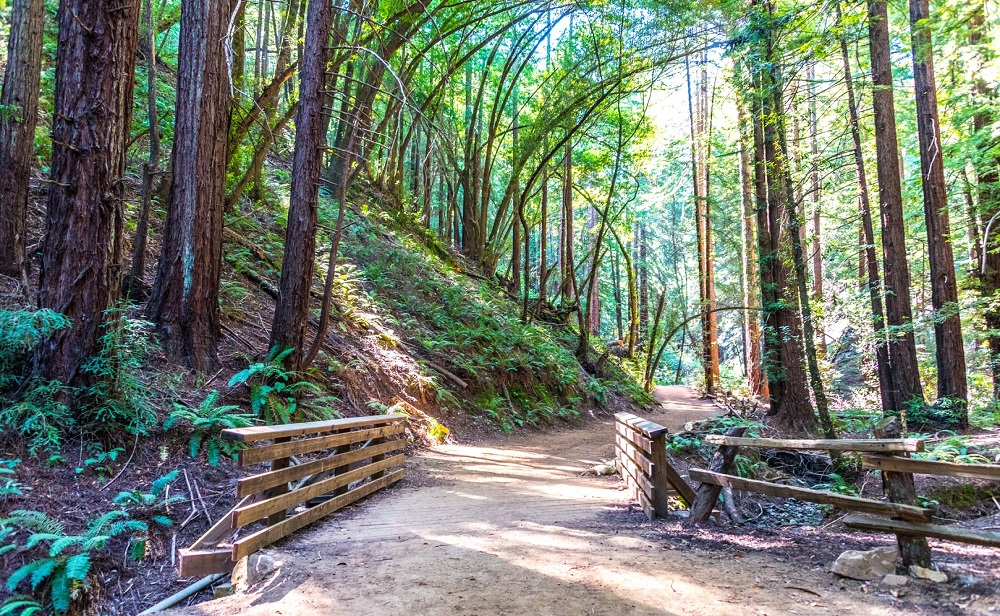Find trails near me is more than just a search query; it’s a gateway to exploration, fitness, and connection with nature. Whether you’re a seasoned hiker seeking challenging climbs or a family looking for a leisurely stroll, the desire to discover nearby trails reflects a shared human need for outdoor recreation. This exploration delves into the technology and data behind connecting users with their ideal trails, considering the diverse motivations and geographical nuances involved.
This involves understanding user intent, identifying reliable data sources, and presenting information effectively. We’ll examine how filtering, sorting, and additional features enhance the user experience, ensuring that finding the perfect trail is both efficient and enjoyable. Ultimately, this investigation aims to optimize the “find trails near me” experience, making outdoor adventures more accessible to everyone.
Understanding User Intent Behind “Find Trails Near Me”
The search phrase “find trails near me” reveals a user’s desire for convenient access to outdoor recreational opportunities. Understanding the nuances behind this seemingly simple query is crucial for developing effective trail-finding applications and websites. Different user types have varying motivations, impacting the design and functionality required to meet their needs.
The diverse motivations behind searches for nearby trails highlight the importance of providing comprehensive and tailored results. This goes beyond simply providing geographical proximity; it necessitates understanding the specific needs and preferences of each user group.
User Types and Their Motivations
Users searching for “find trails near me” represent a broad spectrum of individuals and groups, each with unique needs and goals. Hikers might seek challenging climbs with scenic overlooks, while bikers prioritize smooth, well-maintained paths. Families often look for shorter, less strenuous trails suitable for children, perhaps with features like playgrounds or picnic areas. Runners, on the other hand, may prioritize distance, elevation gain, and trail surface type for optimal training. These differing needs necessitate a system capable of filtering results based on various criteria.
Geographical Limitations of “Near Me”
The term “near me” inherently implies a geographical constraint, but the precise radius varies significantly depending on the user’s context and expectations. Someone living in a rural area might consider “near me” to encompass a much wider area than someone in a densely populated city. A user’s perception of “near” might also be influenced by their mode of transportation; a hiker might be willing to travel further than someone relying on public transport. Therefore, effective trail-finding tools must allow users to specify their desired search radius or use location services to dynamically adjust the search area.
Importance of Location Services and Accuracy
Accurate location services are paramount to delivering relevant results for “find trails near me” searches. The accuracy of the user’s location directly impacts the relevance and usefulness of the trail suggestions. Inaccurate location data can lead to irrelevant results, potentially frustrating users and discouraging them from using the service. Utilizing GPS data, along with other location-based services, is critical to minimizing this risk. For instance, a user searching while driving might require a slightly larger radius, while someone searching from their home might want a more tightly focused area. The system should be intelligent enough to account for such variations in user context.
Data Sources for Trail Information
Accurately locating and presenting trail information requires leveraging diverse data sources, each offering unique strengths and weaknesses. The reliability and completeness of this information directly impacts the user experience, influencing the success of a “find trails near me” application. Careful consideration of data sources and a robust aggregation strategy are crucial.
Data sources for trail information fall broadly into three categories: government agencies, commercial mapping services, and user-generated content platforms. Each presents different challenges and opportunities in terms of data quality, coverage, and accessibility.
Government Agencies as Data Sources
Government agencies, such as national park services and forestry departments, often maintain extensive databases of trails within their jurisdictions. These databases frequently include detailed information such as trail length, elevation gain, difficulty level, and permitted activities. However, data consistency can vary across agencies, and updates may not always be timely. Furthermore, access to this data may be limited by API availability or require complex data extraction processes. For example, the US Forest Service provides trail data, but accessing and integrating it into a larger system requires understanding their data formats and obtaining necessary permissions.
Commercial Mapping Services as Data Sources
Companies like Google Maps, OpenStreetMap, and AllTrails provide extensive map data, often incorporating trail information. These services benefit from broad user bases and generally offer user-friendly interfaces. However, the accuracy and completeness of trail data can be inconsistent, varying by location and popularity. OpenStreetMap, being community-driven, can have inconsistencies due to varying levels of contributor expertise and geographic focus. Google Maps, while widely used, may not always provide the level of detail required for hiking, focusing more on road networks. AllTrails, focusing specifically on trails, offers a more complete and curated dataset but is reliant on user contributions and may have limitations in areas with less user activity.
User-Generated Content Platforms as Data Sources
Platforms like AllTrails and others rely heavily on user-submitted data, which offers the advantage of potentially up-to-date information on trail conditions, recent closures, and user reviews. However, the reliability of this data is dependent on user accuracy and the platform’s moderation capabilities. Inconsistent data formats and the potential for subjective reviews present challenges for aggregation and analysis.
Aggregating Trail Data from Multiple Sources
A robust system for aggregating trail data must address potential inconsistencies across sources. This can be achieved through a multi-step process. First, data from each source is standardized using a common data schema, mapping fields from different sources to corresponding attributes. Second, a process of data validation and reconciliation is implemented, comparing data from different sources and prioritizing higher-reliability sources (e.g., government agencies over user-generated content) when conflicts arise. Finally, data cleaning and deduplication are performed to remove duplicate entries and correct inconsistencies. This could involve employing fuzzy matching techniques to identify similar trail entries despite minor variations in names or descriptions.
Structured Data Format for Trail Information
A structured data format, such as a relational database or a JSON schema, is crucial for efficient storage, retrieval, and analysis of trail data. The schema should include attributes such as trail name, location (latitude and longitude), length, elevation gain, difficulty level, permitted activities, recent user reviews, and links to relevant images or other resources. This standardized format facilitates querying, sorting, and filtering of data, enabling efficient presentation to users and analysis for purposes such as identifying popular trails or areas requiring maintenance. For example, a JSON object for a single trail might look like this: "trailName": "Eagle Peak Trail", "latitude": 34.0522, "longitude": -118.2437, "length": "5 miles", "difficulty": "moderate", "activities": ["hiking", "biking"]
Presenting Trail Information Effectively
Presenting trail information clearly and concisely is crucial for a positive user experience. Users need quick access to key details to determine if a trail suits their abilities and interests. Effective presentation involves a combination of structured data, visual aids, and compelling descriptions.
Trail Information in Table Format
A well-structured table provides a quick overview of essential trail characteristics. This allows users to easily compare multiple trails at a glance. Responsive design ensures readability across various screen sizes.
| Trail Name | Distance (miles) | Difficulty | Location |
|---|---|---|---|
| Eagle Peak Trail | 5.2 | Moderate | Rocky Mountain National Park, CO |
| Coastal Redwood Trail | 2.8 | Easy | Humboldt Redwoods State Park, CA |
| Appalachian Vista Trail | 8.7 | Strenuous | Great Smoky Mountains National Park, TN |
| Desert Bloom Trail | 3.1 | Easy | Joshua Tree National Park, CA |
Highlighting Key Trail Features with Bullet Points
Using bullet points allows for a clear and concise presentation of important trail features. This improves readability and helps users quickly identify trails that match their preferences.
For example, for the Eagle Peak Trail, key features might be presented as follows:
- Elevation Gain: 1,500 feet
- Scenery: Panoramic mountain views, alpine meadows
- Water Sources: Limited; carry sufficient water
- Wildlife: Potential sightings of elk, bighorn sheep
Visual Representation of Trail Maps and Routes
Visual aids are essential for understanding trail layout and terrain. A well-designed map should clearly show the trail route, elevation changes, points of interest, and potential hazards. For instance, a sample map could use a color-coded elevation profile alongside a topographic map, illustrating the trail’s incline and decline with different shades of color. Key points of interest, such as viewpoints or water sources, could be marked with distinct icons. A simplified, cartographic-style map showing the trail’s overall path, overlaid on a satellite image, can provide a valuable context of the surrounding environment. Interactive maps, allowing users to zoom in and out, and potentially even view 3D renderings, can further enhance user experience.
Using Descriptive Text to Highlight Unique Trail Aspects
Descriptive text helps to paint a picture of the trail experience, appealing to various user interests. For example, for the Coastal Redwood Trail, one might write: “Immerse yourself in the awe-inspiring majesty of ancient redwood forests. This easy trail winds through a tranquil grove, offering a peaceful escape from the everyday. Listen to the gentle rustle of leaves and feel the cool shade as you walk amongst these giants.” For the Appalachian Vista Trail, a description might focus on the challenging aspects: “Prepare for a strenuous but rewarding hike. This trail offers breathtaking panoramic views from its high-altitude vantage points, but demands a good level of fitness and appropriate gear.” This tailored approach caters to different preferences, attracting hikers seeking relaxation or a challenging adventure.
Filtering and Sorting Trail Results
Finding the perfect trail often involves sifting through numerous options. Effective filtering and sorting mechanisms are crucial for a positive user experience, allowing users to quickly pinpoint trails matching their specific preferences and location. This section details the methods employed to refine search results and present them in a user-friendly manner.
Filtering Trail Results by User Preferences
Users have diverse preferences when choosing trails. Implementing robust filtering options based on these preferences is essential for a successful trail-finding application. These filters allow users to narrow down the results to trails that align with their fitness level, desired trail type, and proximity.
- Distance: Users can specify a maximum distance from their current location or a chosen point. This filter leverages geographical data to return only trails within the specified radius.
- Difficulty: Trails are often categorized by difficulty levels (e.g., easy, moderate, hard, expert). Users can select their desired difficulty range to filter out trails that are too challenging or too easy.
- Trail Type: This filter allows users to specify the type of trail they are looking for (e.g., hiking, biking, running, horseback riding). This requires accurate categorization of trails within the data source.
- Length: Users can specify a minimum and maximum trail length to filter results based on the desired duration of their activity.
- Elevation Gain: For users interested in a challenging workout, this filter allows them to specify a minimum or maximum elevation gain.
Sorting Trail Results by Relevance and Location
Once filtered, trail results need to be sorted to present the most relevant options first. This typically involves a combination of factors related to relevance and proximity.
A common approach is to use a hybrid sorting algorithm combining distance from the user’s location with a relevance score. The relevance score could be based on factors such as user ratings, number of reviews, trail popularity, or a combination thereof. For example, a trail closer to the user with high ratings and many reviews would rank higher than a more distant trail with lower ratings.
The sorting algorithm might be represented as: Score = w1 * Distance + w2 * Relevance, where w1 and w2 are weights representing the relative importance of distance and relevance.
The weights (w1 and w2) can be adjusted based on user feedback and analysis of user behavior to optimize the sorting algorithm’s performance.
Incorporating User-Defined Preferences
User preferences are paramount. The system should allow users to save their preferred filters and sorting options for future searches. This personalized experience enhances user satisfaction and efficiency. For example, a user who frequently hikes moderate-difficulty trails within a 10-mile radius could save this filter combination for quick access. The application should also allow users to easily adjust or reset their preferences as needed.
User Interface for Filtering and Sorting
A well-designed user interface is crucial for effective filtering and sorting. The interface should be intuitive and visually appealing. Consider a sidebar or a collapsible panel where users can select their desired filters (distance slider, dropdown menus for difficulty and trail type, checkboxes for additional options). A clear indication of the number of results after applying each filter helps users understand the impact of their choices. Sorting options (e.g., “Sort by distance,” “Sort by rating”) could be presented as a dropdown menu or radio buttons. The interface should provide real-time updates, reflecting the changes in the search results as users adjust filters and sorting options. Visual cues, such as map markers highlighting filtered trails, can further enhance the user experience.
Additional Features and Enhancements
Enhancing a “Find Trails Near Me” application beyond basic trail location requires incorporating features that cater to user needs and preferences, ultimately boosting user engagement and satisfaction. Adding functionalities such as user reviews, photos, and real-time weather information can transform the experience from a simple locator to a comprehensive trail planning resource.
Integrating these additional features requires careful planning and execution to maintain a user-friendly interface. Data accuracy and timeliness are paramount, requiring robust data management strategies and mechanisms for user feedback and correction.
Trail Reviews and Ratings
User-generated reviews and ratings provide invaluable insight into trail conditions, difficulty, and overall experience. This feature can be integrated by allowing users to submit text reviews and star ratings after completing a hike. These reviews, along with associated user profiles (optional), would then be displayed alongside the trail’s basic information, providing a more holistic view. For example, a trail might show an average rating of 4.2 stars out of 5, with several user reviews highlighting scenic viewpoints or challenging climbs. This system could also incorporate features such as flagging inappropriate content or verifying user reviews through various mechanisms to maintain quality and accuracy.
Trail Photos
Visual information significantly enhances the user experience. Users can upload photos of their hikes, providing a dynamic visual representation of each trail. These images would be displayed in a gallery format, allowing users to scroll through photos from various hikers. Image moderation would be necessary to ensure appropriate content and quality. A system of tagging photos with relevant keywords (e.g., “waterfall,” “rocky terrain”) would also improve searchability and organization. For instance, searching for “waterfalls” would display trails with photos containing waterfalls, enhancing the user’s ability to find trails matching their preferences.
Real-time Weather Information
Displaying current and forecast weather conditions for each trail enhances safety and planning. This could involve integrating with a reliable weather API to provide temperature, precipitation, wind speed, and other relevant data. This information would be displayed prominently alongside the trail information, allowing users to make informed decisions about their hike based on current conditions. For example, a user planning a hike might see a warning of impending rain or high winds, potentially influencing their decision to postpone or adjust their plans.
Challenges in Maintaining Data Accuracy and Timeliness
Maintaining the accuracy and timeliness of user-submitted data (reviews, photos) and external data (weather) presents significant challenges. Mechanisms for user feedback and moderation are crucial to ensure the quality of reviews and photos. For weather data, relying on a reputable API with a proven track record of accuracy and reliability is essential. Regular checks and updates of trail information from official sources are necessary to account for changes in trail conditions or closures. Automated systems for detecting and flagging inconsistencies or outdated information can improve data management efficiency.
Potential Future Improvements and Expansions
A robust system could incorporate features such as interactive trail maps with GPS integration, allowing users to track their progress in real-time. Integration with fitness trackers could allow users to record their hike statistics. The system could also incorporate trail difficulty ratings based on elevation gain, distance, and terrain type, providing more refined search filters. Advanced search features, allowing users to filter trails based on specific features (e.g., pet-friendly, wheelchair accessible, scenic overlooks), would also enhance the user experience. Finally, a community aspect could be introduced, allowing users to connect, share experiences, and plan group hikes.
Wrap-Up
Successfully navigating the “find trails near me” landscape requires a multifaceted approach. By understanding user needs, leveraging diverse data sources, and presenting information clearly and engagingly, we can create a powerful tool that connects people with the natural world. Future enhancements, such as integrating real-time weather updates and user-generated reviews, will further refine the experience, ensuring that every outdoor adventure begins with a seamless and informative search.




